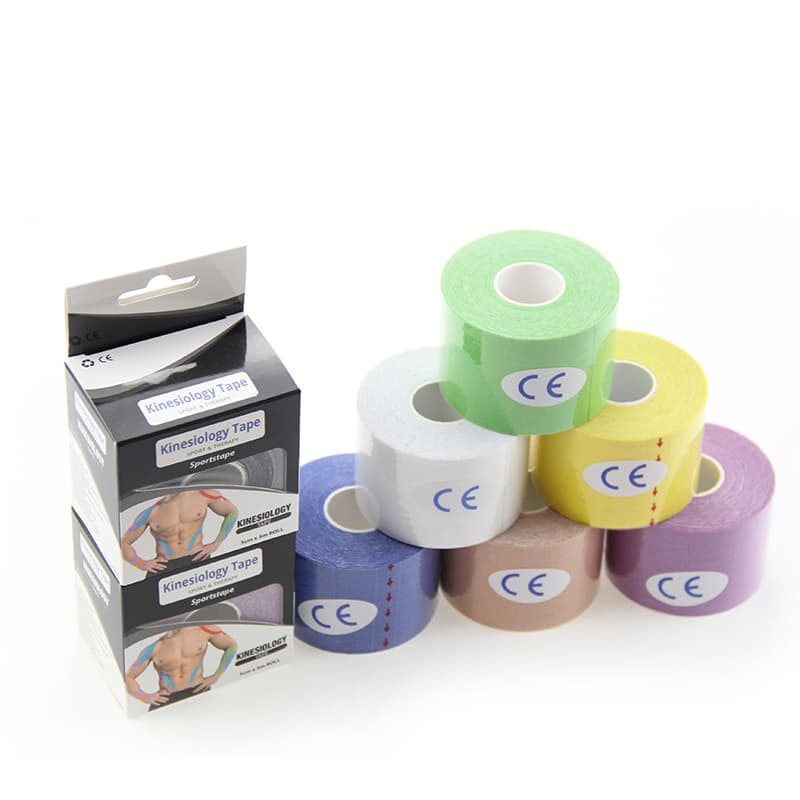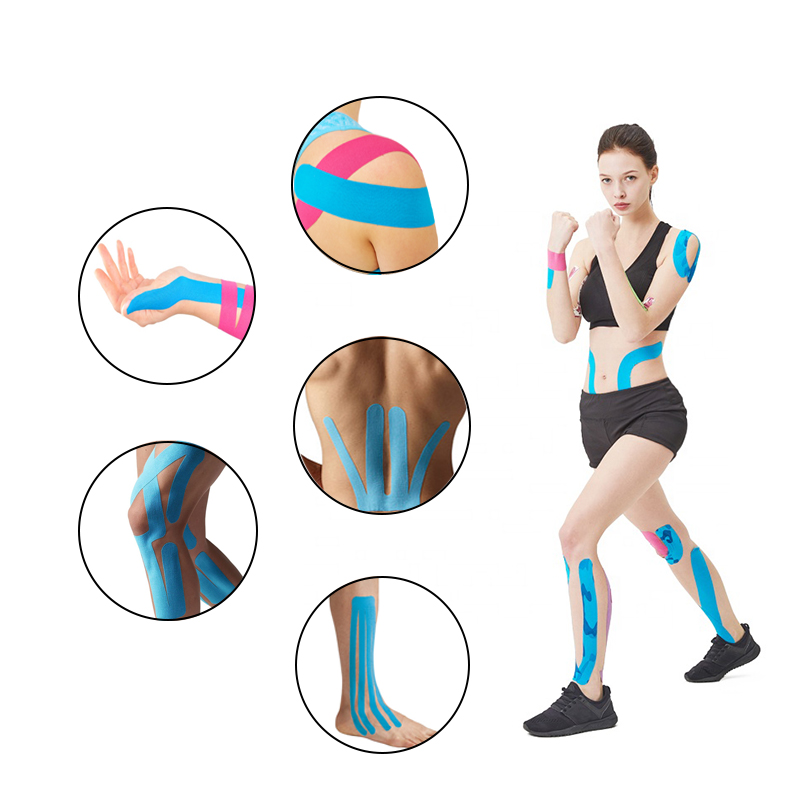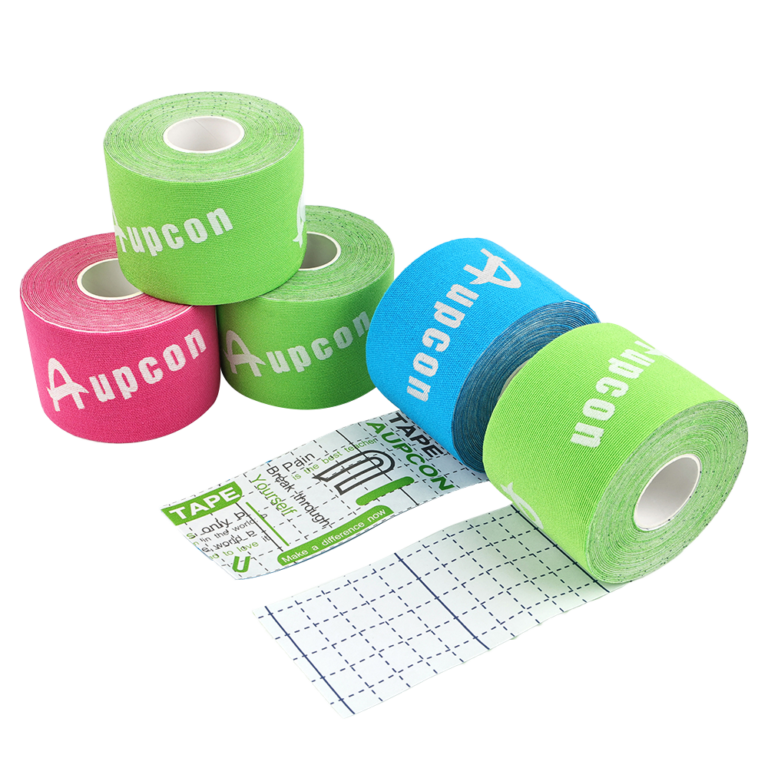Le football est un sport passionnant et intense, mais les blessures sont parfois inévitables, même pour les joueurs les plus acharnés. Dans cet article, nous allons explorer certaines blessures courantes du football et comment Aupcon, une marque de ruban adhésif pour blessures de confiance, peut fournir le soulagement et le soutien nécessaires à une récupération rapide.

Blessures courantes au football et solutions de bandes de protection Aupcon :
Attelles de tibia
Cette affection douloureuse provoque une gêne à l'avant ou à l'arrière du tibia, souvent en raison d'une pression répétée sur l'os du tibia et les tissus qui y sont attachés. Le ruban adhésif pour blessure peut aider les joueurs de football à soulager cette douleur en fournissant un soutien ciblé et en réduisant le stress sur les muscles affectés. Veuillez vous référer à la procédure d'utilisation du ruban adhésif pour blessure bande de kinésiologie pour les périostites tibiales.
Douleur au genou
La douleur au genou est un problème courant chez les joueurs de football et provient d'une utilisation excessive, d'une technique inappropriée ou d'une affection sous-jacente. Le ruban adhésif pour blessure peut assurer la stabilité, réduire l'inflammation et favoriser un bon suivi des articulations pour soulager la douleur et le soutien. Parcourez notre comment utiliser la bande de kinésiologie du genou
Entorses de la cheville
Les entorses de la cheville sont courantes sur le terrain de football et peuvent provoquer une instabilité et une gêne. Le bandage pour blessure peut changer la donne, en fournissant un soutien structurel léger aux ligaments blessés, en améliorant la circulation sanguine et en aidant à réduire l'enflure pour une récupération plus rapide. Découvrez notre comment utiliser la bande de cheville
Souche aux ischio-jambiers
Les accélérations et les décélérations soudaines peuvent provoquer des tensions aux ischio-jambiers, ce qui constitue un handicap majeur pour les joueurs de football. Le ruban adhésif pour blessures peut aider à gérer les tensions aux ischio-jambiers en soutenant les fibres musculaires blessées, en améliorant la circulation sanguine et en vous accompagnant tout au long de votre convalescence. Découvrez notre article Comment appliquer du ruban adhésif de kinésiologie sur vos ischio-jambiers.
Blessures à l'aine
Des changements rapides de direction et des mouvements latéraux violents peuvent entraîner des blessures à l'aine caractérisées par des douleurs à l'intérieur de la cuisse. Le bandage pour blessures peut fournir un soutien ciblé à la région de l'aine, réduisant ainsi le stress musculaire et favorisant une récupération plus fluide.
Abrasions aux bras
Les écorchures des bras, également appelées brûlures du gazon, sont des lésions de la peau provoquées par un impact violent lors d'une chute d'un joueur de football. Les abrasions des bras peuvent être évitées en enroulant un ruban de gazon de 10 cm autour du bras. Il est également connu sous le nom ruban de gazon ou Bande de kinésiologie de 4 pouces.
Alors, qu’est-ce que le ruban adhésif pour blessures ?
Le ruban adhésif pour blessures est également appelé bande de kinésiologie en coton ou bande musculaire. Il est le plus couramment utilisé dans les centres de physiothérapie, les équipes sportives et les équipes d’athlétisme.


Contactez le fabricant de bandes de kinésiologie.
Bande de kinésiologie Il s'agit d'un patch élastique qui a progressivement gagné en popularité dans la pratique clinique en Europe et aux États-Unis ces dernières années. Il n'est pas médicamenteux comme les pansements ou les tissus médicamenteux traditionnels chinois, il est donc moins susceptible de provoquer des allergies cutanées ou une mauvaise adaptation.
L'effet le plus magique de bande de kinésiologie Le patch est conçu de manière à ce qu'il soit élastique et tendu. Qu'il s'agisse du « tissu » de la couche supérieure du patch lui-même ou de la « colle » de la couche inférieure qui colle à la peau, ils sont conçus selon des mécanismes biomécaniques et physiologiques. Par conséquent, la qualité a un impact important sur l'effet du traitement.
En plus de la bande de blessure elle-même, le facteur le plus critique qui détermine l'effet du traitement est l'expérience et les compétences du thérapeute. Le même rouleau de ruban adhésif pour blessures peut sembler similaire même s'il est scotché de la même manière. Néanmoins, l'effet du traitement peut différer considérablement de la « conception » et du « réglage précis » du taping en fonction des symptômes d'autres patients. Les thérapeutes doivent prendre en compte les concepts et techniques de traitement globaux du tissu fascia sous-cutané, du tissu musculaire, des articulations, de la circulation sanguine et lymphatique, du tissu nerveux, etc., pour exercer l'effet thérapeutique magique du ruban adhésif pour blessures.
Essayez de laisser les médecins professionnels de la médecine du sport et de la réadaptation vous aider avec le bandage ou le bandage sous leur direction (comment utiliser la bande de kinésiologie). Avant de procéder à la pose du bandage, la zone à scotcher doit être nettoyée, conservée à température ambiante et sèche, puis le bandage pour blessure doit être appliqué directement sur la peau. Lors de la pose du bandage, la tension doit être modérée et le bandage doit être appliqué dans le sens du muscle blessé et de la structure anatomique sportive de la partie concernée.



